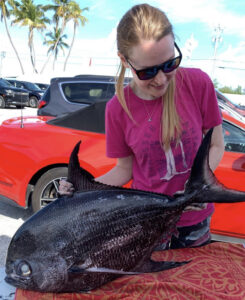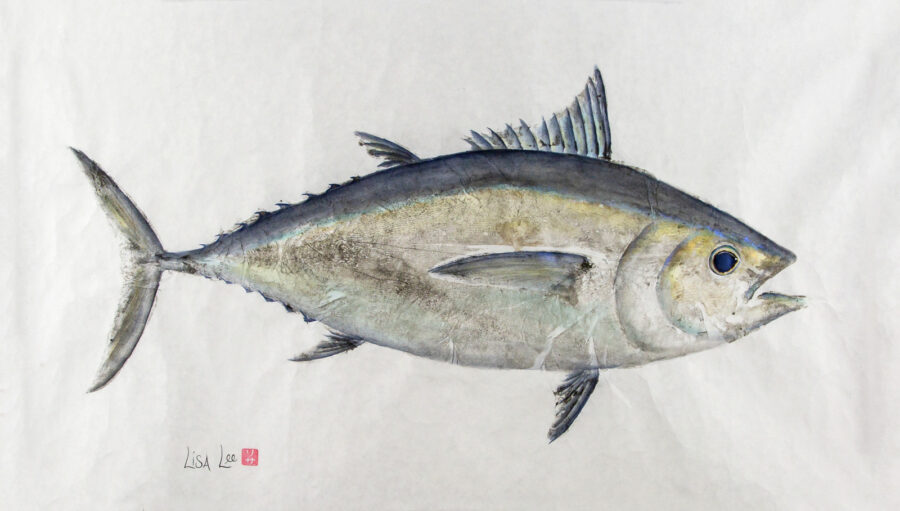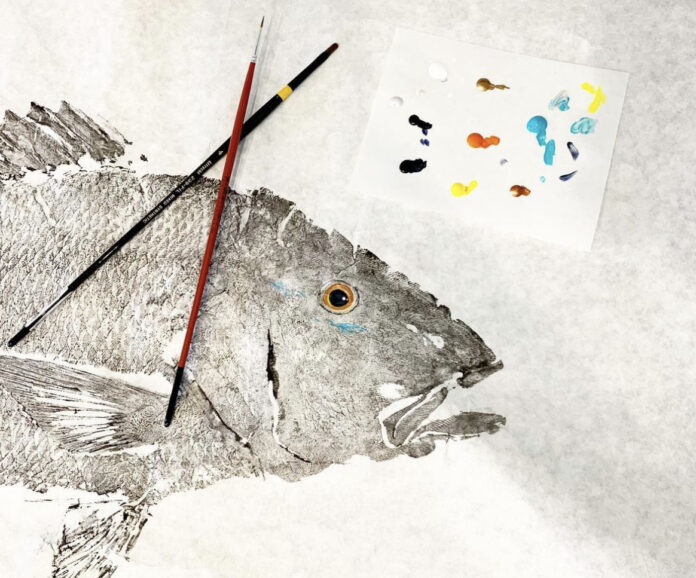You might have gone to an art show or gallery and seen large fish impressions. If they look a little different from traditional art, that is because they are. They are called gyotaku.
A traditional Japanese method for printing a fish, some of the earliest examples date back to the mid-1800s. The earliest known gyotaku dates from 1857, and features a carp caught in the Mogami River.
The word gyotaku is a compound word: gyo, which means fish, and taku, which means stone impression. While the word is exotic, it clearly describes what it is. Gyotaku was originally a way for fishermen to record their catches.
How did this Japanese art become so prevalent in the United States? Two main reasons. The first was an exhibition in 1956 at the American Museum of Natural History in New York. The exhibition was called “Gyotaku: the Impression of a Fish.” The second is a book by Yoshio Hiyama called “Gyotaku: The Art and Technique of Fish Print.” While the exhibition introduced America to this Japanese art of printing fish, the book taught about the mechanics of gyotaku. Since then, gyotaku has grown in many creative ways, becoming an art form of its own.
Islamorada is home to a professional gyotaku artist, Lisa Lee. She is a professional member of the Gyotaku Art of Europe and the Nature Printing Society. Lee has been featured on the Discovery Channel’s “Only in the Florida Keys” and PBS’s “Art Loft.” I was lucky to catch up with her and talk to her about her gyotaku process.

Here is Lisa’s process in her own words: “In traditional gyotaku, they would apply inks to one side of the freshly caught fish, cover it with kozo paper and rub the papers to create an impression of the fish. I like to stick to this original method as closely as possible. I use a non-toxic ink so when I’m done with the printing process the fish is still perfectly fine to filet up for dinner so nothing goes to waste. All of my papers are imported from a small papery in Japan so each roll may be slightly different.”
She added, “Once I’m finished printing the freshly caught fish, I take the prints back to my gallery to properly trim the edges of the paper and then embellish them with as much or as little color as I see fit. Traditional gyotaku, only the eye was embellished leaving the print as is. I love this aesthetic; however, having been a professional marine artist for about 15 years, I enjoy adding back the fish’s full color, bringing it back to life. Detailing the eyes of any fish is a meticulous process, but I find it to be one of the most important finishing details. Once I’m finished with the piece I have them professionally photographed and archived as well as professionally framed.”
The art of gyotaku has come a long way from Japan to here in the Keys. What started as a way to document a fish you caught transformed into an art form in itself. I often wonder what is next for this art form.

























